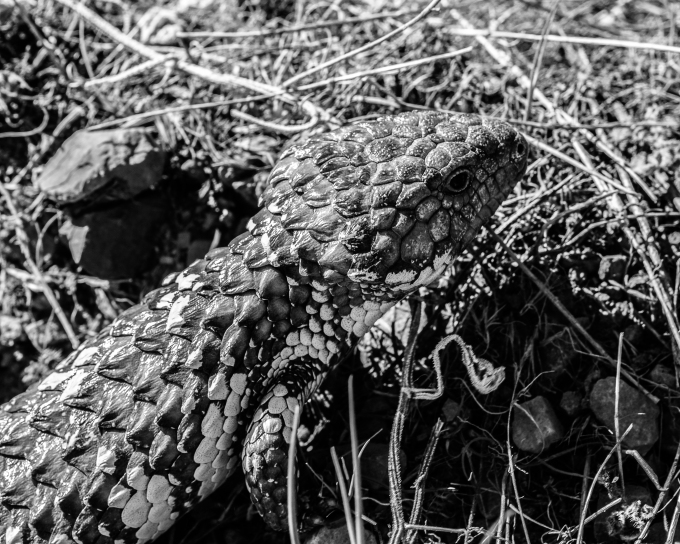Sleepy Lizards
Posted on February 11, 2020

I’ve been fond of Sleepy Lizards (Tiliqua rugosa) ever since I saw them on a wildlife documentary several years ago, back in the UK (it’s probably David Attenborough’s fault). In 2017 I was lucky enough to see some for real, in their natural habitat.
Also known as Shinglebacks, these splendid Australian creatures have a number of merits for the discerning wildlife enthusiast, especially if you don’t want to spend weeks tramping through miles of trackless wilderness:
- They’re common, so you have a good chance of seeing them, if you’re in the right bit of the country (southern and western Australia).
- They like basking on the side of roads, making them easy to spot.
- They don’t move very fast, so high-end action photography gear isn’t required.
- Unlike most Australian wildlife/plants/fungi/weather/geography, they appear not to be trying to kill you!

A Sleepy Lizard by the roadside in Australia.
The heftiest of the blue-tongued skinks, Sleepy Lizards get me slightly in The Feels, as they are generally monogamous, and can form partnerships lasting up to two decades. During the breeding season, they can be found wandering around in pairs – the male trailing after the female.

View of an entire Sleepy Lizard.
Sleepy Lizards are fairly stumpy creatures; the suggestion is that the shape/size of the tail may well confuse predators that mistake it for the head. As well as this, these creatures are fairly well armoured, which seems like an eminently sensible response to living in Australia. The tubby tail is also used to store fat reserves, to get the lizards through more trying times.
If something annoys a Sleepy Lizard, it has quite a dramatic threat display: it opens its mouth wide, displaying its striking blue tongue against a bright pink background. I don’t have any pictures of this, as I tried not to annoy any of these most excellent creatures.
 Bill Ford-Smith
Bill Ford-Smith